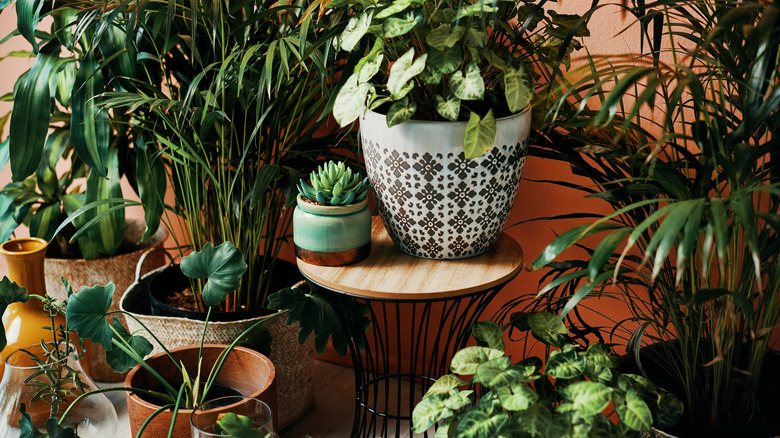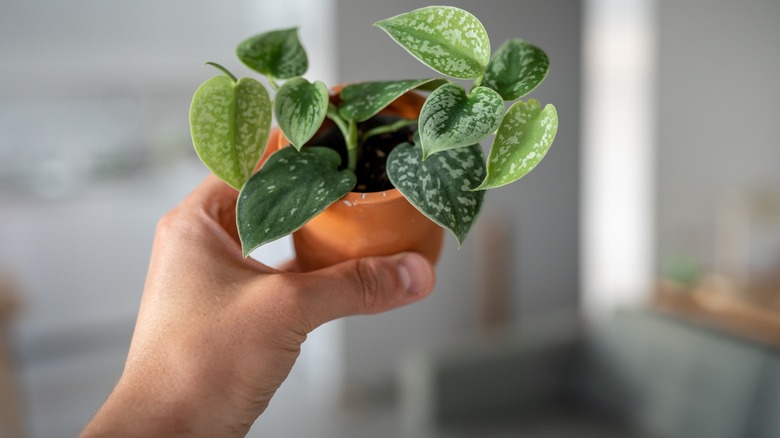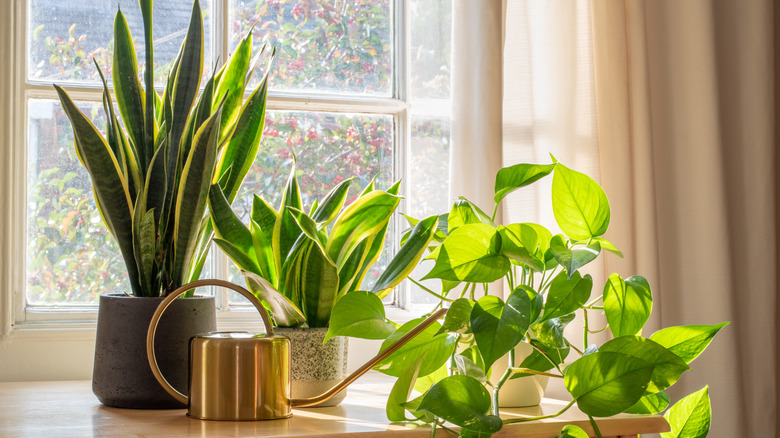HGTV's Jenn Todryk Offers Valuable Houseplant Advice For Beginners
If you've ever tried your hand at growing houseplants, you know how challenging and even downright intimidating the process can be. After a few failures, it's easy to give up on your dream of living in a house full of dazzling natural greenery and start reaching for the ease of artificial plants instead. This is the route "No Demo Reno" designer, Jenn Todryk, took for years after her own struggles with keeping houseplants alive.
Todryk recently shared some advice with House Beautiful for others who wish to switch from decorating their homes with faux plants to growing and displaying the real things. "Over the past five years or so, I've really had fun buying real plants slowly and keeping them alive and being successful in that," she told the outlet. Her advice? Take it slow, mastering one plant at a time. "Figure out the plant and try to keep that one alive before you try to take on another plant baby." All you need is the right beginner plant to dedicate your efforts to.
Houseplants for beginners
If you're just starting (or restarting) your houseplant journey, there's no need to worry. There are dozens of plants that are easy to care for and coax into a successful lifespan, even for those who have never taken part in any type of gardening before. The key to houseplant success is to be realistic about how much time and effort you're willing to put into caring for your plants, and then choose a plant to start with that can easily thrive with that level of upkeep.
Many popular houseplants are actually quite low-maintenance and therefore beginner friendly. Snake plants, pothos, ZZ plants, prayer plants, various succulents, and even monsteras require very little effort to maintain. Pick your favorite and then be sure to read the plant's packaging or do a quick online search to learn how to properly care for it. The type of soil the plant requires, how much sun exposure it needs, and how frequently watering and misting are required are the main points to explore. Just be sure to limit yourself to one plant to start, as Jenn Todryk advised.
Faux plants vs. real plants
There is absolutely nothing wrong with using faux plants to decorate your home, especially in areas that are too low-light for real plants to grow. Many modern artificial plants are nearly undetectable and add the same vibrant touch to a room that an authentic plant would. There are, however, benefits to keeping real plants around your house that faux plants just can't compete with. While both real and faux plants can boost mood and concentration, real plants have the added benefits of filtering the air in your home and offering biodegradable disposal at the end of their lifetimes.
A snake plant, for instance, can filter six harmful toxins out of the air supply in your home, according to Healthline. It can also potentially prevent or reduce indoor allergy symptoms. When you consider these benefits, the small amount of care required seems a bit more worth it. As Jenn Todryk put it, "I thoroughly enjoy having real plants and no longer think that they are a complete pain in the butt!" However, if your home contains pets or small children, always research the toxicity of any houseplant you consider purchasing. Many plants can be toxic to humans, dogs, cats, or all of the above when consumed.


